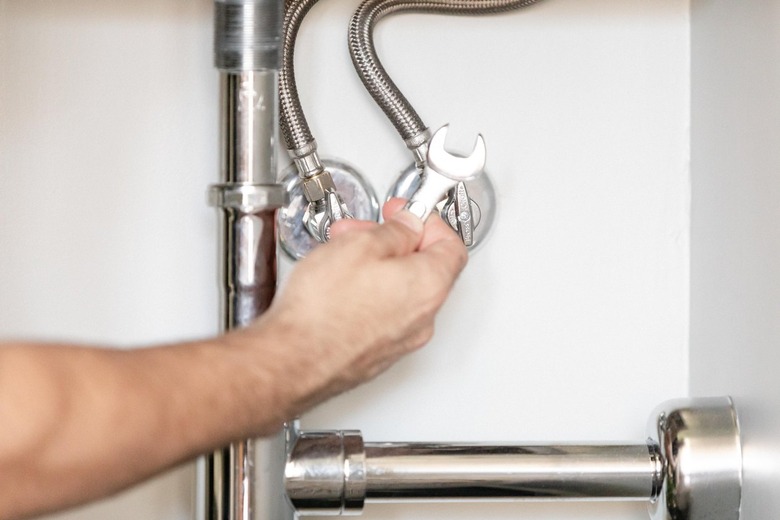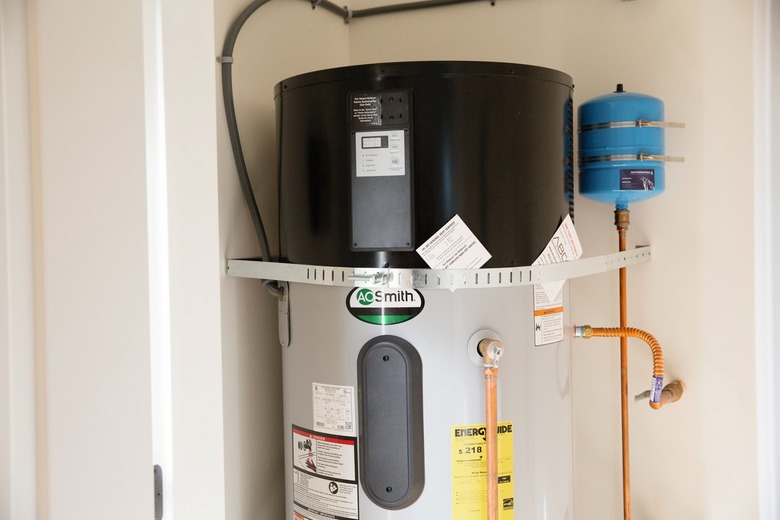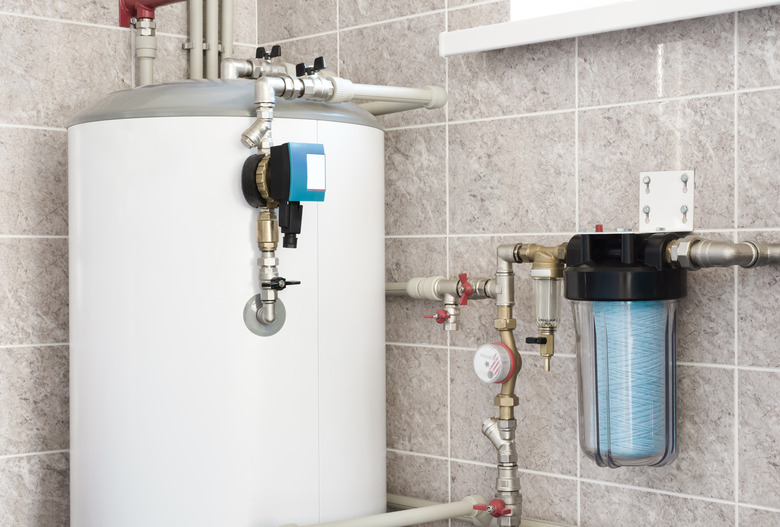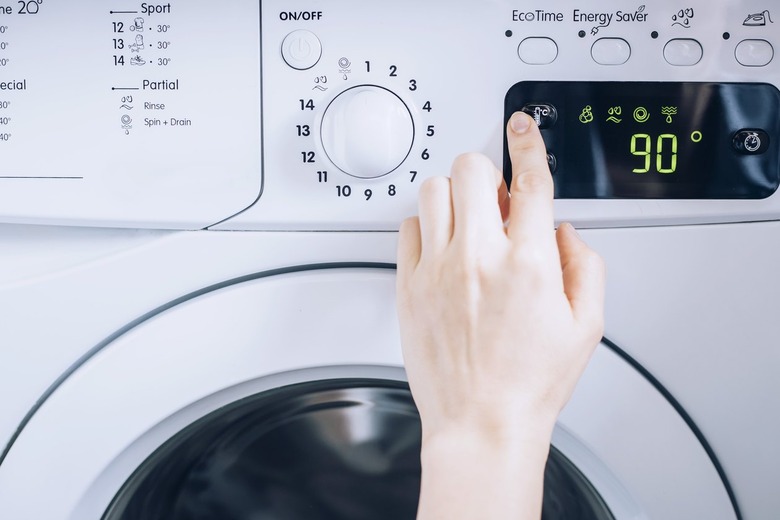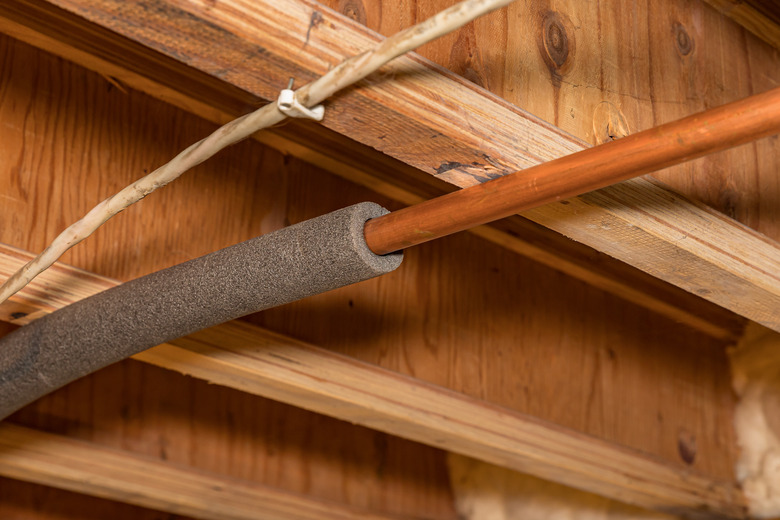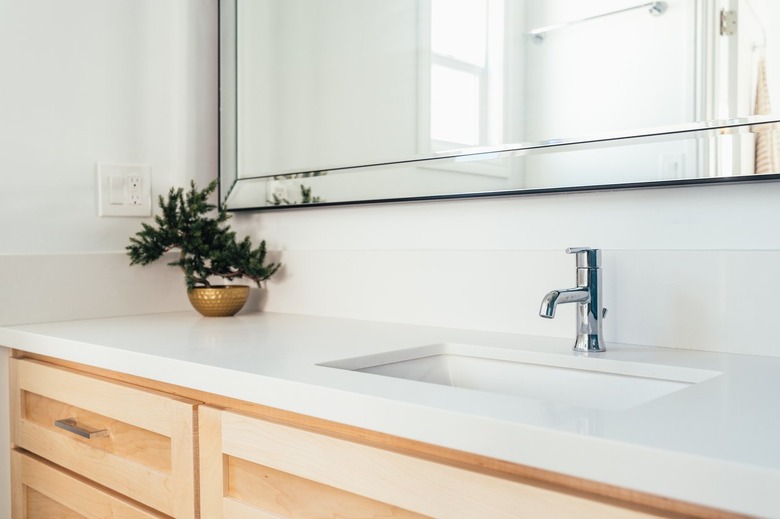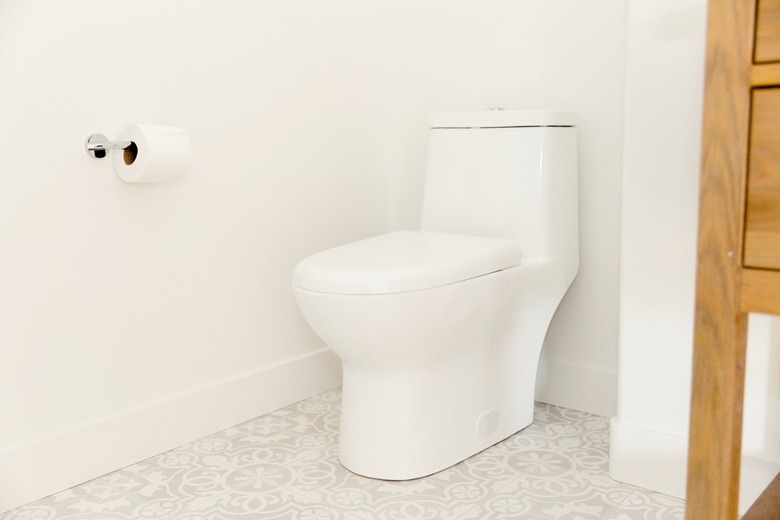6 Ways To Make Your Plumbing More Energy Efficient
We may receive a commission on purchases made from links.
Water-saving plumbing fixtures save water, of course, but energy-efficient plumbing also saves energy, and that's great news for your bank account. According to Energy.gov, water heating accounts for almost 20 percent of a home's energy use, so homeowners looking to save energy through plumbing have three goals: heat water more efficiently, limit heat loss through plumbing pipes and fixtures, and reduce hot water consumption.
If you get your water from a well, saving water also saves energy because your well pump has to run less often, and it consumes less electricity when you use less water. There are plenty of water-saving plumbing upgrades that can help reduce hot water consumption, including low-flow faucets and showerheads, and combining these with more energy-efficient hot water production can make a big difference to your energy bill.
Even if you aren't on a well, it's important to conserve water, which is an increasingly precious resource in many parts of the country. Plumbing fixture upgrades can help you lower your water bill, but if you're serious about energy savings, you might want to take a hard look at your major appliances that produce and use hot water. Your water heater is a good place to start.
1. Replace your water heater.
1. Replace your water heater.
If you have a standard tank-style water heater, you're heating water in the most inefficient way possible. The average household uses 64 gallons of water per day at an average yearly cost between $400 and $600. Efficiency is even lower if the water heater is more than 10 years old, so if yours is that old, it may be time to consider replacing it with a more efficient model.
- Heat pump water heaters, also known as hybrid water heaters because they combine heat pump technology with resistive heating, are two to three times more energy efficient than conventional storage water heaters. They cost more up front, but if one can save you a hundred dollars a year, it can pay for itself over its lifetime.
- Tankless water heaters can use 8 to 34 percent less energy than a conventional storage tank water heater, but they aren't always the best solution. If you have a large household, a single tankless water heater may not supply enough hot water for everyone to use simultaneously, especially when a washing machine or dishwasher is also running.
- Solar water heaters consume up to 50 percent less energy than conventional ones, and the reason that figure isn't 100 percent is because households typically need backup water heating for cloudy days.
Tip
Perhaps your conventional water heater is new and working well, and you don't want to replace it. In that case, you should wrap it with an insulating blanket to prevent heat loss, and you should flush it yearly. Flushing gets out the sediment that inevitably collects in the bottom and absorbs heat that should be going into the water. You'll also save energy by turning down the thermostat to 120 degrees maximum.
2. Switch to a high-efficiency boiler.
If you live in a cold climate, you may have a hydronic heating system, and if so, you have a boiler. The maximum efficiency rating of a conventional boiler is 80 percent, which means that 20 percent of the energy it uses is wasted (it isn't used to heat water). Unless a conventional boiler is brand new, you may want to consider replacing it with a high-efficiency boiler , many of which have efficiencies around 96 percent. Instead of blowing 20 cents of every energy dollar out the vent, a high-efficiency boiler only loses 4 cents, which is a big enough savings to compensate for its higher cost.
3. Upgrade to an energy-efficient washing machine or dishwasher.
3. Upgrade to an energy-efficient washing machine or dishwasher.
A lot of hot water goes into every washing machine load, and while you can save plenty by doing only full loads, you can save more by buying a new Energy-Star-certified washing machine. The best models have a high integrated modified energy factor, which means they could use up to 45 percent less energy than conventional top-load models depending on the rating. They also have a low integrated water factor and can use up to 50 percent less water. You'll see the ratings for each product on its label.
You might think you can save water and energy by washing your dishes by hand rather than doing them in a dishwasher, but the opposite is actually true. Dishwashers get the job done with less water than you use in the sink. You can maximize energy savings by only doing full loads, operating the machine in energy-saving mode, and using the air-dry cycle (which uses cold air) to dry the dishes. Dishwashers heat the incoming water, so there's no need to turn up the water heater to improve cleaning. Keep it set at 120 degrees.
4. Insulate those pipes.
4. Insulate those pipes.
Rather than insulating just those pipes in danger of freezing during cold weather, you should insulate all the hot water pipes in your plumbing system that you can access. This reduces heat loss and makes it more likely that you'll have water hot enough to use as soon as you turn on the faucet rather than having to wait for it while letting unused water go down the drain. Pipe insulation is inexpensive and easy to install.
5. Improve hot water accessibility.
5. Improve hot water accessibility.
If the water heater is far from where you use the faucet, you can reduce wait times and wasted water by having a plumber install a low-power-consumption water recirculation pump. It keeps hot water circulating in the pipes so you always have it when you need it without waiting. It can be programmed to come on at times of the day when you regularly need hot water.
Another option is to install an electric point-of-use water heater in the cabinet under the sink. It can provide instant hot water and take some of the load off the central water heater.
6. Install water-saving plumbing fixtures.
6. Install water-saving plumbing fixtures.
Water-saving add-ons, such as low-flow showerheads and faucet aerators, can reduce the number of gallons of water you use daily, and that in turn reduces the amount the water heater has to heat. Low-flow add-ons have a downside (besides the obvious one of less luxurious showers): Because of the reduced water flow, they increase the wait time for hot water, so you might want to use them in conjunction with a recirculation pump to make them more energy efficient.
These days, no toilet uses more than 1.6 gallons of water per flush, but high-efficiency toilets use even less, allowing you to save water with each flush. Depending on how you get water, this can help you save on your energy bills as well as your water bill. Even the reduced amount of water is a waste if you flush when you don't have to, however, but "letting it mellow if it's yellow" might not be your thing. If not, install dual-flush toilets, which use less water for flushing liquid waste than they do for solid waste.
References
- Energy.gov: New Infographic and Projects to Keep Your Energy Bills Out of Hot Water
- U.S. Boiler Company: What is a High Efficiency Gas Boiler?
- Energy Star: Clothes Washers
- Home Climates: Why Does It Take So Long to Get Hot Water? How to Get Hot Water Faster
- Save On Energy: 3 Ways to Make Your Plumbing More Energy Efficient
